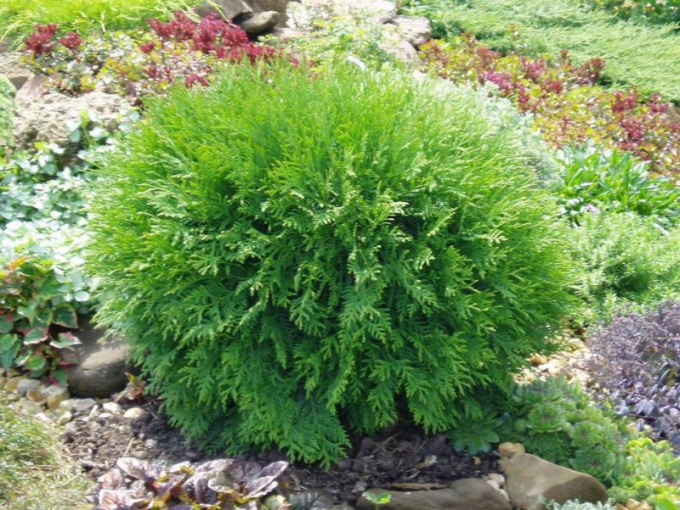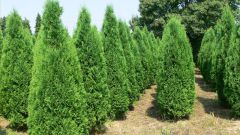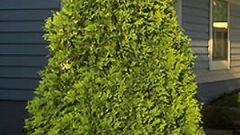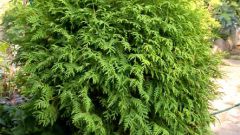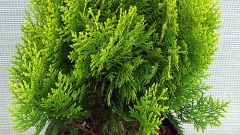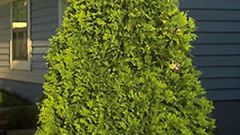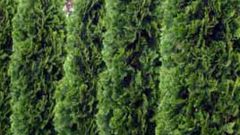Landing globular arborvitae
In order to plant thuja, need to buy seedlings or grow them yourself. Arborvitae seeds are placed in special knobs, which ripen in autumn. The best time for planting is spring. Plant seed to a depth of 5 cm Thuja rises fast enough, but it requires protection from the sun. The sprouts are so delicate, that the sun they die.
Thuja be planted in a permanent place in the age of 5-7 years. To do this, dig and carry it always with a clod of earth. Before doing this you should decide with the landing pit. The size of the pit shall be suitable for the plants root system. Usually the average depth is 60-80 cm
Prepare a hole a couple of weeks before the transplant. Fill it with special soil: two parts loam, one part peat, one part sand. Also add in the pit 5 grams of NPK. Put in the pit drainage layer of 20 cm, if the soil is very clayey. This will prevent the formation of root rot. During the transplant zaglubljaja th so that the root collar remains on the surface of the earth.
Watering
The first month after planting is the most important. Proper irrigation at this time 10 liters of water under a Bush on a weekly basis. In dry weather, watering the globular thuja twice a week. The lack of moisture, you will always notice thinning at the crown. Immediately after watering loosen the earth round tree trunks of thuja. The cultivation depth: 10 cm then lay around TUI mulch. Use peat moss or sawdust.
Fertilizing and protection from pests
Fertilizer make every spring in the area round tree trunks. The calculation is as follows: 100 grams of substance per one square meter. Early spring use of nitrogen fertilizer. In June, swipe potash fertilizer. In poor soil, be sure to make phosphate fertilizers. The young plants love the fertilizer slurry. Mullein dilute with water in ratio of 1:20.
To protect fifth from the invasion about scale insects, spray the tree early in the spring uktelecom or Malathion. Re-spraying swipe in the middle of summer. Malathion helps and from a thuja aphid. About the appearance of this pest can be judged by the yellowed crown. With other pests fight with drug Acarina. In the acidity of the soil or its salinity can occur fungal diseases.
Pruning and preparing for winter
Pruning dead branches is an important point in care. The crown of thuja formed independently. Therefore, remove only the dry or broken stems. Such pruning is carried out every spring. If your arborvitae performs the role of a hedge, trim it, not only in spring but also in late summer.
Adult thuja normally spend their winter under the snow layer. Sapling be sure to mask off dry leaves, twigs or insulation. At temperatures below -5oC, cover the plant with film advanced.
